by Jasmine | Sep 10, 2013 | Beginner Yoga, Couples Retreat, Couples Yoga, Romantic Date Ideas, Spirituality
Guest Post by Ashley Josephine Herzberger
If practicing yoga for its calm-inducing, stress-reduction, weight loss, flexibility-increasing and/or fitness maintenance benefits doesn’t strike your fancy, fret not – you don’t have to practice yoga for any of those reasons. If, however, you want to be a better lover, you may want to reconsider.
Inherent in the magic spell of yoga is its ability to calm you down, connect you to yourself, the present moment and those around you, and help you feel less reactive, aggressive and more open, loving and appreciative. Being a better lover involves shifting from a space of reactive defensiveness to receptive openness.
5 Ways Yoga Makes You A Better Lover

How yoga makes you a better lover
-
Relaxation
To be a good lover, we must move away from our fast-paced, high-stress state when we come home to our partner and families. Staying in a stressful state is dangerous as it leads to chronic stress, which can manifest as physical, mental and emotional pain down the road. You’ve probably known someone who’s had a breakdown, a hospital scare or an illness brought on and amplified by stress.
Yoga helps you relieve stress, as it focuses not only on physical poses that stretch and strengthen the body but also because it focuses on breathing, which counters cortisol (the stress chemical) released in the body. Anything you can do to release your stress will help you be more available to love your partner and enjoy his or her company.
Plus, to have good sex, you must know how to relax. It’s a physiological fact.
-
Giving AND Receiving
Yoga also teaches you how to give and receive. Practicing yoga can be very challenging, but also extremely rewarding. Understanding the balance between pushing yourself to your limits and easing off to receive the benefits of relaxation during a yoga class is similar to the play between giving and receiving between partners.
Couples yoga is especially beneficial, as most poses require each partner to communicate and work together before either partner can experience the true benefits of the pose. While understanding balance for yourself is a big win, learning how to understand it between you and your partner is a relationship saver.
-
Strength
It’s hard to argue that yoga does not make you strong. Many a muscly man walks into a yoga class skeptical about such “sissy” workouts, only to leave drenched in his own sweat, appalled at how hard yoga actually can be and somewhat ashamed that his big muscles couldn’t power him through the same poses petite ladies all around him naturally and effortlessly complete.
Besides the physical strength and tone yoga can provide to the body (and the eyes of your partners), the emotional and mental strength yoga builds must not be neglected. Emotionally, yoga makes you less reactive and more receptive, less assuming and more questioning, less freaking out and more calm and in control.
Oh, and women, it also helps you tone up your pelvic floor muscles, which happens to be one component of experiencing better orgasm.
-
Connection
Practicing yoga by yourself also strengthens your connection to your Self and your spirit. There is nothing religious about yoga in and of itself, but you can certainly feel more connected to God, Buddha, Allah, Jesus, Mohammed, Abraham, whoever.
Practicing yoga with your partner naturally makes you feel more connected to your partner. Besides the fact that you get a full session of yoga touching each other for the majority of the time, you get to experience gentle, relaxing and compassionate touch. For some couples, this is a rarity.
-
Focus & Self-control
Finally, yoga helps you increase your focus and self-control. What does this have to do with making you a better lover? Increasing your focus helps you perform better at work but also helps you pay more attention to your significant other. It helps you put down the phone and get rid of distractions so that you can better connect with your partner.
Increasing self-control comes from the mental and emotional benefits of yoga, but also a particular muscular engagement called mula bandha. Similar to a Kegel exercise, engaging mula bandha holds your energy in, rather than allowing it to flow out, if you get my gist men. Over time, this increased focus and self-control can account for longer and more enjoyable sack sessions.
Whether you’re looking to feel more connected to your partner, be a better person for yourself and others, increase strength and flexibility, decrease stress and anxiety or just have better sex, yoga can definitely help you out on all fronts.
For more information and research about how yoga makes you a better lover, check out these articles from Psychology Today, Harvard Health Publications, and Men’s Health.
Guest Post by Ashley Josephine Herzberger

Ashley Josephine Herzberger helps busy women relax. She integrates yoga, meditation, energy practices and self-care exercises to empower women to redefine and rediscover balance in their work and lives. She recently published her first ebook, available for free download on her website, “The Unconventional Beginner’s Guide to Yoga.” Check out her online yoga community for women at AshleyJosephine.com.
by Jasmine | Jan 15, 2013 | Beginner Yoga
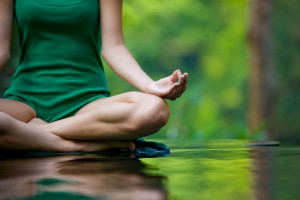
Beginner Yoga Tips
I’ve been teaching a class at the Mt Airy Learning Tree in Philadelphia the last few years called, “ Beginner Yoga for the Stiff and Inflexible“.
A lot of the students that come have a lot of anxiety about the poses. Many times they confirm they are in the right class before we get started. Last night a student came up to me and said, ” This is my first time doing yoga, so I’m not going to know a lot of the terms and poses. ” I assured her that she would be fine and she was in the right place. I’ve always thought it was pretentious for yoga teachers to only use the sanskrit word for a pose. Unless you are in a yoga teacher training class, 90% of the students will have no idea what you are talking about. Beginner students won’t know the pose even if you use the English word for it. Ok folks…. everyone get into staff pose. I always thought it was a sign of an unskilled teacher to just bark out names of poses without anatomically describe how to get into them. How easy is it to tell someone to do a downdog and opposed to tell them what they should be doing with their feet, toes, elbows, hips, legs, head, ribs and neck?
I’ve taught a lot of yoga the past few years and this particular class has always been the most popular one. I think it taps into the anxiety people have about trying someone new. There is a lot of performance anxiety in any sport or physical endeavor and I always spend a fair amount of time telling students to use the practice just to become more aware, to let go of performance anxiety and to stop the pose if it is painful. I can hear audible sighs of relief when I tell the class to be mindful of these things.

Clothes to Wear in Yoga Class
Beginner Yoga Tips for the Stiff and Inflexible
1. Avoid a heavy meal right before. No double bacon cheeseburgers or cheesecake right before class. If you eat, something light like a grilled chicken salad or a few handfuls of almonds. Part of the secret reason I started telling students this is that I use to have a lot more farters in class. Advising people what to eat and not eat right before has cut down and people cutting the cheese audibly in class.
2. Bring a yoga mat. Last night in my class I had two students out of seventeen that forgot mats despite a few messages out to the group to buy a mat. Even if the studio has mats, they are often not cleaned very well or very often.
3. Wear clothes you can stretch in. For some people this may mean sweats. Sometimes people wear shorts but these can rip during some of the wide-legged poses. For women this means a fitted shirt so if you do a forward fold your shirt doesn’t flip over. If you wear a tank top, be aware that you want one that covers your cleavage so you are not giving too much of a show.
4. Turn your cell phone off. I see some people that have their cell phones on their yoga mat. Occasionally, medical professionals that are on call or people that have pressing child care issues tell me before they might get a call and have to leave during class. Everyone else though, please turn off your phone.. if it’s important then they will leave a message.
5. Come early. Arrive a few minutes early to decompress. When I lived in New York, my apartment was so small I couldn’t do legs up the wall. I used to get to class 20 minutes early so I could get some bonus yoga in. How annoying is it when you come late to the class and there is all kinds of rearranging that has to happen to accomodate you?
6. Watch some beginner yoga on youtube before you come to class. Then you’ll be familiar with the langugage, flow etc and it will be less intimidating for you.
7. Let go of the need to do the poses perfectly. It’s your first time. Allow yourself to experience it fully without fear of your performance. Many of the students have been doing this for years if not decades so they might be more flexible than you. It’s not a stretching contest so no one wins a prize anyway for putting their foot behind their head.

The Yoga Mat Tie
On an unrelated note. My new yoga mat tie. I know this seems like the most simple product ever, but that’s because it is. And sometimes, you don’t need all of the bells and whistles–you just need something streamlined and basic that does the job–and that’s what The Yoga Mat Tie does. It’s been a great little solution for unruly mats.
by Jasmine | Nov 21, 2012 | Beginner Yoga
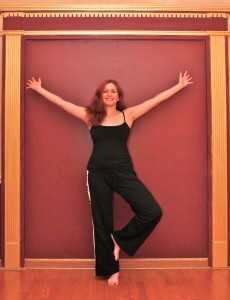
Yoga Etiquette for Beginner Students
I can still remember my first time. My friend brought me to a yoga studio almost two decades ago and I was not given any pointers on how to behave or act during the yoga class.
Here is a list of Top Things to keep in mind for beginner yoga students.
Yoga Etiquette for Beginner Students
Turn Your Cell Phone Off.
Where in your cell phone manual does it say that you have to be available to answer every call or text that comes in? Isn’t that what voice-mail is for? If it’s important they will leave a message. Oh, this also means that you shouldn’t have it on vibrate. When it is during a quiet part of the class then we can all hear the buzzing from your phone… equally annoying.
Don’t Come to Class All Stinky.
I realize you are probably going to sweat a bit. Oh, if you don’t wear deodorant for ethical, environmental reasons please just stay at the other end of the class, preferably near the window. The one exception to the stinky rule is if you are going to a Bikram class. The room and everyone in it will pretty much smell like Ebola 90 seconds after entering.
Don’t Hog Mat Space.
You probably came with a gym bag, purse, maybe a towel to shower in afterwards but you don’t need to set up a small refugee camp right near your mat. The only thing you might need near your mat are keys, wallet, water and maybe a few yoga props such as blocks, a strap and a bolster. You can leave your overnight bag outside the room.
Take Your Shoes Off
In most eastern and Asian countries, it is a sign of reverence and respect to take your shoes off when entering a home or temple. You can also leave your shoes outside the room also. Unless you are in an urban area where people from the street came easily come in you can probably leave your shoes outside as well.
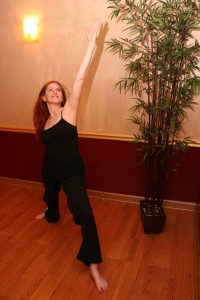
Don’t Come Late
Traffic was terrible wasn’t it? What do you think the rest of us did…. take a chopper to get here? We all have to deal with traffic, parking or subways, buses trains etc. If the weather is cranky then factor that in. How annoying is it when you are starting to meditate or get in touch with your deep inner wisdom when you hear a loud sticky mat unrolling, keys dropping, velcro unfastening right next to you? I know I supposed to feel all compassionate and enlightened during my practice but when an inconsiderate poo-head starts to be all noisy next to me then I just want to clock them in the face.
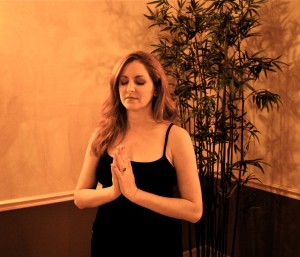
Be Considerate During Meditation in Yoga
If You Come Late, Be Quiet
If you glossed over my rant before, then maybe you can read this one. If you do come late because there was a Presidential event that shut down all the major roads and highways then wait until an appropriate moment to set up. Here are examples of inappropriate moments – When we are meditating, when we are ooohhming and when we are in a restorative pose. If we are moving around with our eyes open then that is a good moment to set up.
Don’t Leave During Shivasana
The corollary to coming late is leaving early during the relaxation part of class. If you do have to leave early then you should let the teacher know beforehand ( unless an injury came up) and leave during a more active part of the class. Please don’t leave when we all are drifting deep into our third eye during Shavasana or Pranayama ( controlled breathing exercises.)
Don’t Fart in Class.
We realize you don’t do this on purpose so ways to avoid this are to not eat a heavy meal before class. Avoid cheesecake, lasagne and a hot fudge sundae right before. If you are going to eat before a grilled chicken salad or a handful of almonds will help. Some poses ( like when you are hugging your knees into your chest) tend to make this happen so go into these more mindfully to avoid blast-off.
Don’t Stare at Other Students
Especially for dudes… just because we are wearing tight Lycra shiny pants and a crop top. When we are on all fours or any pose where you can see some cleavage or a good booty shot then don’t be Clarence Thomas. Think of our bodies like a solar eclipse… get a glimpse of it (try to hide that) but avert your eyes.
So what do you think of students that ignore yoga etiquette for beginner classes?
by Jasmine | Sep 20, 2012 | Beginner Yoga, Yoga Clothes, Yoga For Weight Loss, Yoga Health

Clothes to Wear in Yoga Class
Before new students come to a yoga class, I usually tell them what they should bring. Some of these might seem basic but will just throw them in the mix anyway.
What To Wear and Bring in Hot and Beginner Yoga Classes
Clothes to Stretch In – For women this means a fitted shirt. If you just wear a loose T-Shirt then when you do a forward fold, you will be giving us a show of your bra and tummy. If you are wearing a tank top be aware that you might do doing poses where you might end up giving a cleavage show. Check your tank top that it is fitted and also covers some cleavage, especially if you are folding over. You do a lot of bending, twisting, and sometimes hopping and jumping so you need clothes that cover your lady parts no matter which direction your body goes.
I generally would avoid shorts since many of the poses you will be wide legged and you either might be giving us a show or you run the risk of your pants splitting, which has happened to me more than once. Sweat pants, yoga pants or my newly favorite pajama-jeans are some of my favorite bottoms to wear to yoga.
For a hot yoga class, it is acceptable and encouraged to wear crop bra tops and shorts. Sometimes the guys don’t wear shirts for these… depends on the class though.
A yoga mat. I always tell my students to bring their own yoga mats. Most yoga studios will have extras on hand, sometimes for free, sometimes you pay extra. Often these are not washed or cleaned just before. Do you really want your bare skin and face on a mat that was just smeared with someone else’s sweaty body? . One studio I went to never washed their mats and they smelled like Snooki’s armpit. I like to go to The Clymb as a cost and time efficient way to find a mat online.
Water– Just plain water. You might get pretty hot during the class and the studio often will not have a water fountain there. Sometimes they have bottled water but then you have to pay more for it. For a hot or power yoga class this is a must. Please don’t bring your double mochac part-skim decaf in the room. If it spills, it will be all sticky…… yuck.
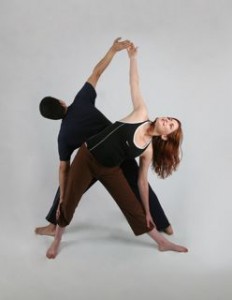
Bring Your Yoga Mat, Eye Pillows, Towels, Stretchy Pants to Yoga
Eye Pillow – This is one of the most heavenly ways to get more connected to the ether of the universe during shavasana (relaxation) Ideally one that is lavender – scented will turbo charge this. If you don’t have an eye pillow, then an eye- covering is a basic substitute. A simple thing that makes relaxation more profound. Not always easy to find these but if you do it will be worth the effort.
Towel (For hot or power yoga only) You’re going to sweat so planning on mopping yourself up a bit.
Depending on the class, you should inquire if you should bring blocks, a Mexican blanket and a strap and a towel..
In Restorative and Iyengar classes, they usually supply plenty of props such as blocks, blankets, chair, eye pillows and a dozen other things as well. When you are at your mat with all your props you feel like you have your own campground.
Wallets – it has been rare but it’s worth it for your peace of mind to have your wallet and keys in the room with you.
Avoid wearing hanging jewelry such a big dangling earrings and necklaces. When I invert then my necklace tends to choke me or whack me in the face.
Avoid dressing too sexy, which means clothes that are uber-tight and or see through. Generally it is mostly women in the class but if there are a bunch of dudes then you will feel self conscious doing a wide legged forward bend while wearing your see through camel-toe yoga pants with your crop bra top.
Avoid heavy perfumes and scented lotions. Just be neutral smelling. On the flip side, don’t come to class all stinky and subject us to your fumes.
Leave your cell phone in the car. Too easy to forget to turn it off and we don’t want to hear your snazzy cell phone ring when we are becoming one Shiva and Shakti.
Leave your shoes off or outside the room. In my thousands of yoga classes I have taken, I have never heard of anyone having their shoes stolen outside the room.
What are things that you always make sure to bring or leave at home during yoga? Post your answers on our Facebook page.
by Jasmine | Aug 22, 2012 | Alternative Health, Beginner Yoga, Reviews, Yoga DVDs, & Podcasts, Yoga Teacher training
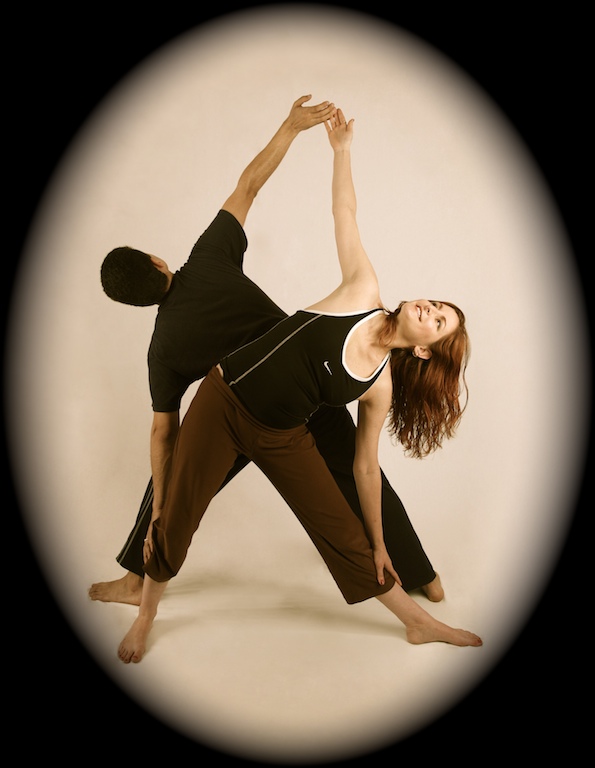 Anyone else out there taken Gary Kraftsow’s Viniyoga? I’ve been doing this at home the last few days with his DVDs. I like the pace, simple but descriptive enough instructions. He also gives an in-depth anatomy and bio-mechanics. He also has all kinds of graphics about anatomy and the body. It’s a lot of yoga, instruction and education on one DVD. There are actually a few practices on each DVD. For example, I have been watching the Yoga for Low Back Pain DVD and there is a sequence just for low back pain and sciatica, a sequence for hip pain and also a strength building sequence for low back pain and hip tightness.
Anyone else out there taken Gary Kraftsow’s Viniyoga? I’ve been doing this at home the last few days with his DVDs. I like the pace, simple but descriptive enough instructions. He also gives an in-depth anatomy and bio-mechanics. He also has all kinds of graphics about anatomy and the body. It’s a lot of yoga, instruction and education on one DVD. There are actually a few practices on each DVD. For example, I have been watching the Yoga for Low Back Pain DVD and there is a sequence just for low back pain and sciatica, a sequence for hip pain and also a strength building sequence for low back pain and hip tightness.
Yoga master Gary Kraftsow developed protocols for a recent National Institutes of Health-sponsored study of treatment for back pain. This two-DVD series is based on this work and on his 30 years of experience as a yoga therapist. The detailed instruction, gentle repetitive movements, and focus on moving with awareness and the breath make these ideal practices for a wide range of people, including those who may not have pain but can benefit from strengthening and stabilizing their backs.
Yoga Therapy for the Low Back, Sacrum & Hips
There is also a more detailed practice workshop on there but the pace is slower and he is more explaining how to do the pose, which means he only shows how to do the pose on one side so you can’t follow the flow of it since you are left to your own devices to do the pose on the other side. That’s fine if you want very detailed instructions on how to do each movement but it’s not as flowy if you just want to do the practice.
He has quite a few poses where you are kneeling on your knees, which is fine for me. I’ve found that my very overweight students are not able to do the kneeling poses or poses where you are on all fours since that is too much pressure on your knees and for some on their wrists.
by Jasmine | Aug 2, 2012 | Beginner Yoga, Meditation, Spirituality, Yoga Health
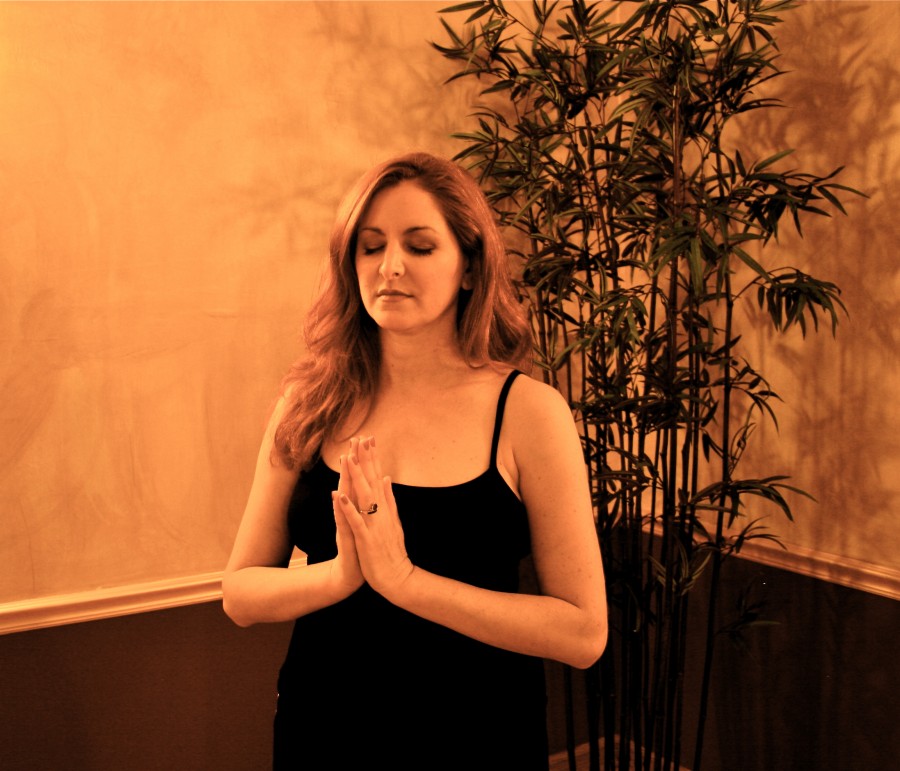
In Corporate America, a Shell engineer starts a meditation program that helps innovation & creativity
Far be it from me to promote any oil or gas company. I like to keep track of which oil companies are involved with the most unsavory labor or environmental practices and avoid buying my gas at these stations…. often driving a bit farther to do so and usually going to a locally owned station which according to my husband makes worse quality gas. I’m not actually that educated or knowledgeable about this subject so chime in if you have more info about this subject…. seems hard to find a gas station that runs on sustainable environmental practice and fair trade as part of their governing practices.
I was reading in the University of Pennsylvania’s Wharton Business school newsletter about noteworthy practices in the corporate and government world. I can across an article about “Innovation and Entrepreneurship” at Shell, which had an example of using conscious breathwork and meditation in order to be more creative and productive.
Mandar Apte, a chemical engineer, has worked at Shell for 12 years. He is part of Shell’s Game Changer program, whose mission is to provide seed funding and guidance to cutting-edge ideas and foster a culture of innovation.
Mandar Apte is also the founder of a staff-led initiative called Empower, which uses breathing and meditation exercises to nurture personal creativity as well as inter-personal skills. So far, some 2,000 employees at Shell offices in the U.S., U.K., the Netherlands and the United Arab Emirates have gone through classes that are part of the Empower program.
In a conversation with Knowledge@Wharton, Apte discusses the impact that Empower has had on him and his colleagues and his hopes for its future. (Video with transcript)
http://knowledge.wharton.upenn.edu/article/3063.cfm
As part of an initiative to make Shell the most innovative energy company in that industry. Apte ‘s regular job involves encouraging innovation and weeding out limiting or disruptive ideas. According to Apte, “Game Changer is a program where you can bring out-of-the-box thinking to our team, and we are licensed to give you not only a budget but also the support structure and network that you need to build that idea into a proof of concept. In today’s world, innovation happens when you make non-traditional connections. The skills you require to foster this innovation culture are mental and social. You need courage to think out of the box. You need to forget past failures. You have to have the skills to manage anxiety because when you are trying something new, you are stepping into the unknown. You need to build a circle of trust around you where you get positive criticism. By enabling staff to develop these mental and social skills, the Empower program has enhanced the ability of Shell employees to innovate.”
Innovation is about thinking of new things. You learn how to drop the old habits, the old ideas, taking a pause from the day to day task of business That’s what meditation allows you. It gives you tools and techniques to pause. And silence is the mother of creativity. That’s the first step. The second step involves social processes and interpersonal skills. If you can invoke that quality of compassion or empathy in yourself, where you are not judging yourself, you’re not criticizing yourself, nor are you judging somebody else, then I think there is a space for insights to be created. How much energy do we spend negatively judging not only ourselves but also our friends, family, co-workers, managers and even strangers? These qualities of non-judgement, acceptance, open-mindedness are crucial for grooming and harnessing your own innovative skills and nourishing the innovation culture in an organization.
Have you ever participated in a course like this at your company that taught you skills to help you nourish your creativity and innovation through holistic practices? What was it like? How did it impact you?
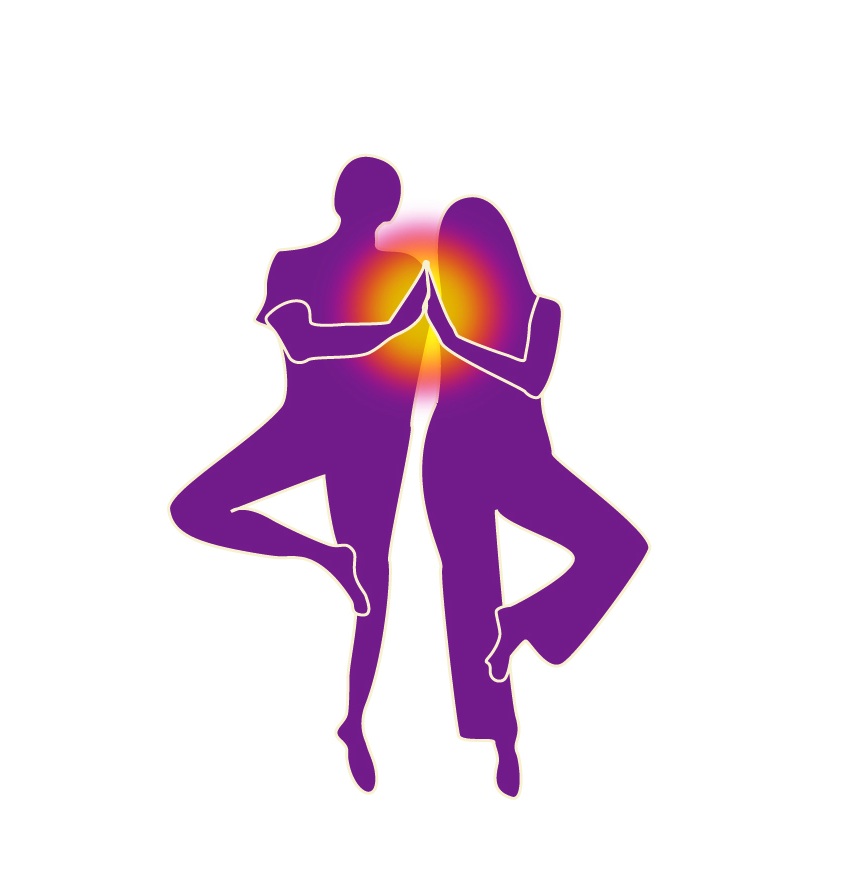








 Anyone else out there taken Gary Kraftsow’s Viniyoga? I’ve been doing this at home the last few days with his DVDs. I like the pace, simple but descriptive enough instructions. He also gives an in-depth anatomy and bio-mechanics. He also has all kinds of graphics about anatomy and the body. It’s a lot of yoga, instruction and education on one DVD. There are actually a few practices on each DVD. For example, I have been watching the Yoga for Low Back Pain DVD and there is a sequence just for low back pain and sciatica, a sequence for hip pain and also a strength building sequence for low back pain and hip tightness.
Anyone else out there taken Gary Kraftsow’s Viniyoga? I’ve been doing this at home the last few days with his DVDs. I like the pace, simple but descriptive enough instructions. He also gives an in-depth anatomy and bio-mechanics. He also has all kinds of graphics about anatomy and the body. It’s a lot of yoga, instruction and education on one DVD. There are actually a few practices on each DVD. For example, I have been watching the Yoga for Low Back Pain DVD and there is a sequence just for low back pain and sciatica, a sequence for hip pain and also a strength building sequence for low back pain and hip tightness.